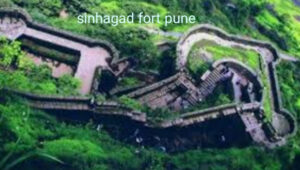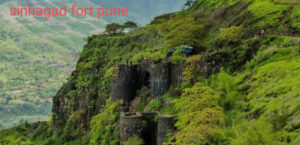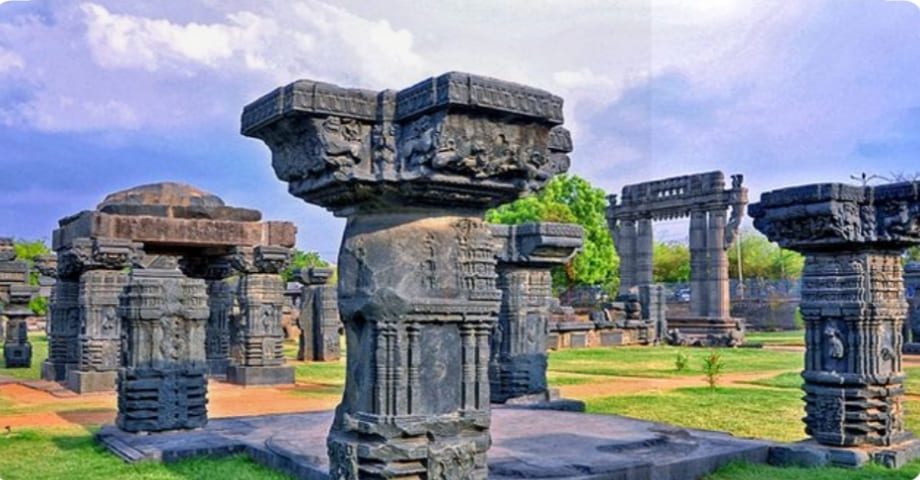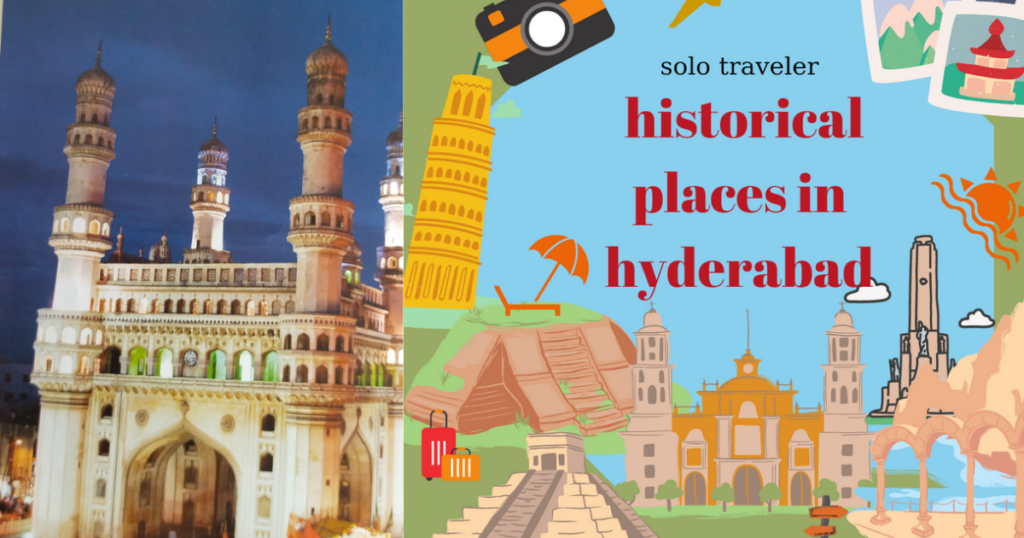Nestled in the Sahyadri Mountain range, Sinhagad Fort pune, stands as a symbol of Maharashtra’s rich history and natural beauty. Just a short drive from Pune, this historic fort has been a witness to numerous battles and holds a significant place in the heart of every Maharashtrian. Whether you’re a history buff, a nature enthusiast, or an adventure seeker, Sinhagad Fort offers something for everyone.

1.Sinhagad Fort Pune: Location and Accessibility
Sinhagad Fort is located approximately 30 kilometers southwest of Pune, making it a perfect weekend getaway for locals and tourists alike. The fort is easily accessible by road, and you can reach it via private car, bike, or by taking public transport from Pune. The base village, Sinhagad, serves as the starting point for those who prefer to trek up the fort.
2.Sinhagad Fort history:Historical Significance
• Ancient Origins
Sinhagad Fort, originally known as Kondhana, has a history that dates back over 2,000 years. The fort was strategically important due to its location atop a steep hill, providing a commanding view of the surrounding region. It has changed hands multiple times over the centuries, reflecting the region’s turbulent history.
• Maratha Empire and Chhatrapati Shivaji Maharaj
The fort gained prominence under the rule of Chhatrapati Shivaji Maharaj, the founder of the Maratha Empire. Recognizing its strategic importance, Shivaji Maharaj captured the fort from the Mughals in 1647. It served as a key defense point for the Marathas, guarding the approaches to Pune.
•Battle of Sinhagad
One of the most famous battles associated with Sinhagad Fort is the Battle of Sinhagad in 1670. The battle is renowned for the bravery of Tanaji Malusare, one of Shivaji’s most trusted generals. Despite being heavily outnumbered, Tanaji and his troops launched a daring night attack on the fort, ultimately sacrificing his life but securing victory for the Marathas. Shivaji Maharaj, upon hearing of Tanaji death, reportedly remarked, “Gad ala, pan Sinha gela” (The fort is captured, but the lion is lost), renaming the fort Sinhagad in his honor.
3.Sinhagad Fort Pune:Architectural Features
• Fort Design and Structure
Sinhagad Fort’s architecture is a blend of military engineering and natural defenses. The fort’s walls are built along the edge of steep cliffs, making it nearly impregnable. The main entrance, known as Pune Darwaza, is one of the two gates that provide access to the fort, the other being the Kalyan Darwaza. Both gates are strategically designed to slow down invaders and protect the fort’s interior.
• Key Points of Interest
– Tanaji’s Memorial: A small memorial dedicated to Tanaji Malusare stands at the spot where he fell during the battle. It serves as a poignant reminder of his bravery and sacrifice.
-Kali Temple: This ancient temple dedicated to Goddess Kali is another key attraction within the fort, drawing both devotees and history enthusiasts.
– Tomb of Rajaram Chhatrapati: The fort is also home to the tomb of Rajaram Chhatrapati, Shivaji Maharaj’s younger son, who spent the last years of his life here.

4. Scenic Beauty and Natural Surroundings
• Stunning Views
Sinhagad Fort offers panoramic views of the surrounding landscape, including the lush green valleys and the shimmering waters of the Khadakwasla Dam. The monsoon season transforms the area into a verdant paradise, with waterfalls cascading down the hillsides, making it a photographer’s delight.
• Flora and Fauna
The fort and its surroundings are rich in biodiversity. The trek up to the fort takes you through dense forests teeming with various species of birds, butterflies, and small mammals. The area is particularly popular with bird watchers, who come to spot species like the Indian robin, kingfisher, and crested serpent eagle.
• Best Time to Visit
The best time to visit Sinhagad Fort is during the monsoon (June to September) and the winter (October to February). The monsoon season brings out the region’s lush greenery and creates a misty, magical atmosphere, while the winter months offer pleasant weather for trekking and sightseeing.
5. Trekking Experience
• Trek Routes
Sinhagad Fort is a popular trekking destination, with several routes leading up to the fort. The most common route starts from the base village of Sinhagad, with a moderately challenging trek that takes about 1.5 to 2 hours to reach the top. For those looking for a more extended adventure, there are alternative routes from villages like Katraj and Donje.
• Trekking Tips
– Gear Up: Wear sturdy trekking shoes and carry a raincoat or windcheater, especially if you’re trekking during the monsoon.
– Stay Hydrated: Carry plenty of water and snacks, as the climb can be exhausting, especially in the heat.
– Safety First: Avoid trekking alone, and always inform someone about your trek plans. Mobile network coverage can be spotty, so it’s wise to stay cautious.
6.Cultural and Social Relevance
• Local Culture and Traditions
Sinhagad Fort holds a special place in the hearts of the local people. It is not just a historical site but a cultural symbol, with numerous stories and legends associated with it. The fort is also a site of pilgrimage, especially during festivals like Makar Sankranti, when locals trek up the fort to offer prayers at the temples.
• Sinhagad Fort in Popular Culture
Sinhagad Fort has been featured in various Marathi films and literature, often symbolizing bravery and the rich cultural heritage of Maharashtra. Its scenic beauty has also made it a popular spot for filmmakers looking to capture the essence of the Sahyadri Mountains.
7. Visitor Information
• Entry Fees and Timings
Sinhagad Fort is open to visitors blend of history throughout the year, with no specific entry fee. However, parking charges apply for vehicles at the base. The fort is accessible from early morning until sunset, making it ideal for a day trip.
• Facilities for Tourists
There are several food stalls and small eateries at the top of the fort, serving traditional Maharashtrian snacks like Kanda Bhaji (onion fritters) and Pithla Bhakri (a local dish made of gram flour and millet bread). Basic amenities like rest areas and public toilets are also available, though it’s advisable to carry your essentials.
Conclusion:
Sinhagad Fort pune is more than just a historical monument; it is a testament to the valor, culture, and natural beauty of Maharashtra. From its storied past to its breathtaking views, Sinhagad offers a unique blend of history, adventure, and serenity. Whether you’re a history enthusiast, a trekker, or someone looking for a peaceful retreat, a visit to Sinhagad Fort is a journey through time and nature that should not be missed.
FAQ:
1.What is the entry fee for Sinhagad Fort?
2.What is Sinhagad Fort famous for?
3.How long does it take to climb Sinhagad?
4.Sinhagad fort pune entry fee
5.Pune to Sinhagad Fort distance
6.Sinhagad Fort information
7.Sinhagad fort information in marathi
8.Sinhagad Fort location
9.Sinhagad fort pune timings

